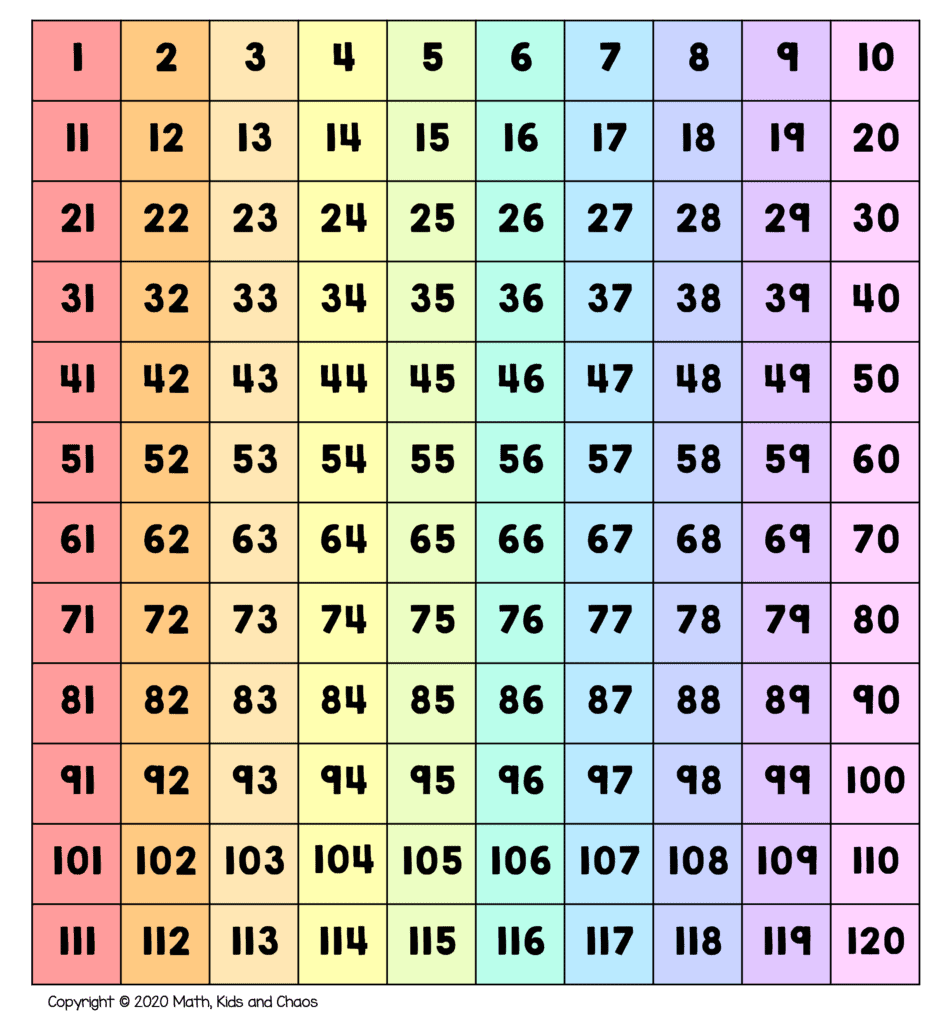Counting is one of the oldest activities of humankind. Whether it be counting sheep, counting stars, or counting the number of pennies in a jar, counting is a method of keeping track of objects, ideas, numbers and more. Although some may find it complex, it doesn’t have to be! The hundreds chart can save any learner from a counting crisis.
What is a hundreds chart and why use one?
 A hundreds chart, or one-hundred chart, is a grid of numbers from one to one-hundred organized in rows and columns. This visual representation serves as a supportive tool to identify patterns and count to one-hundred without having to memorize all the numbers. A chart with the numbers one to one-hundred is known as a complete hundreds chart. This can be especially useful for elementary-aged students that may not have these numbers committed to memory yet.
A hundreds chart, or one-hundred chart, is a grid of numbers from one to one-hundred organized in rows and columns. This visual representation serves as a supportive tool to identify patterns and count to one-hundred without having to memorize all the numbers. A chart with the numbers one to one-hundred is known as a complete hundreds chart. This can be especially useful for elementary-aged students that may not have these numbers committed to memory yet.
How to use a hundreds chart
 Using a hundreds chart can help:
Using a hundreds chart can help:
- Find a miss number in a set of consecutive numbers
- Organize and categorize numbers in sequence
- Identify and use patterns in numbers
- Visualize counting and skip counting by 2s, 3s, 5s and 10s
Hundreds chart free printable
 From posters hung in classrooms to chart worksheets, every student should have access to a hundreds chart, so why not print and make one at home? Here you’ll find printable charts with missing numbers, useful for any level of counting.
From posters hung in classrooms to chart worksheets, every student should have access to a hundreds chart, so why not print and make one at home? Here you’ll find printable charts with missing numbers, useful for any level of counting.
120 chart activities for first grade
 A first grade math class can use the hundreds chart as a starting point for learning numbers and patterns. Kids can also:
A first grade math class can use the hundreds chart as a starting point for learning numbers and patterns. Kids can also:
- Color in the numbers by 5s or 10s
- Write equations, like 5 + 7 = 12
- Draw lines to make shapes
- Circle numbers that equal the same sum
- Create stories around the numbers
Number chart 0-120
 Engaging with numbers is just as important for success in math as memorizing the multiplication table. With a 0 to 120 chart, students can have a visual reminder of the numbers in order, so they can practice counting, writing and adding.
Engaging with numbers is just as important for success in math as memorizing the multiplication table. With a 0 to 120 chart, students can have a visual reminder of the numbers in order, so they can practice counting, writing and adding.
Blank 1-120 number chart
 A blank number chart is the perfect tool for getting creative in the classroom. Students can color in the numbers, fill in missing numbers in a sequence, and realign the boxes to draw shapes, simply with the help of a 1-120 chart.
A blank number chart is the perfect tool for getting creative in the classroom. Students can color in the numbers, fill in missing numbers in a sequence, and realign the boxes to draw shapes, simply with the help of a 1-120 chart.